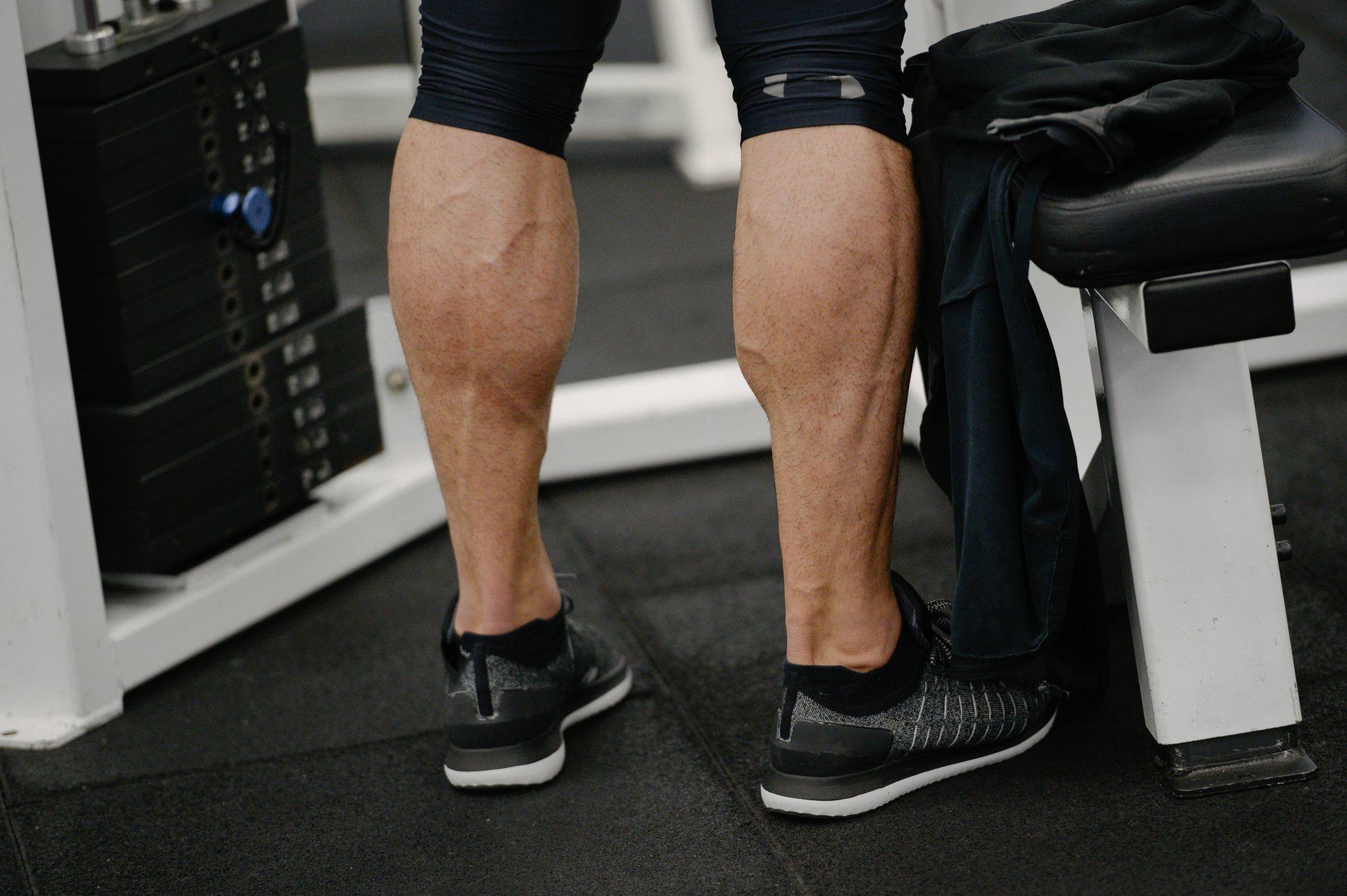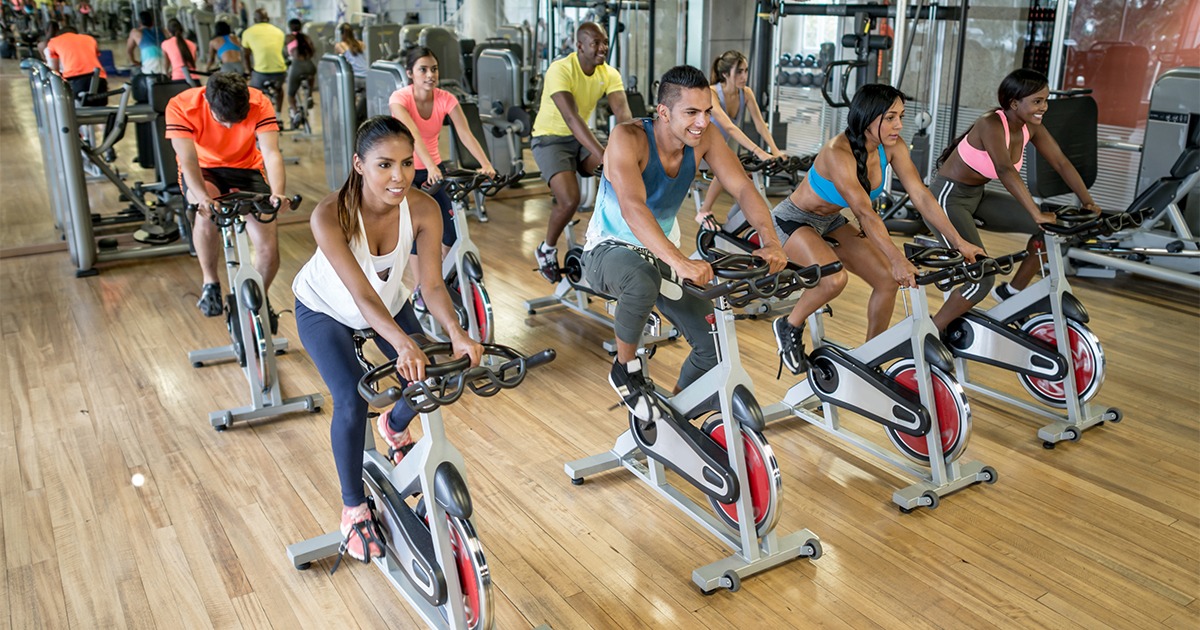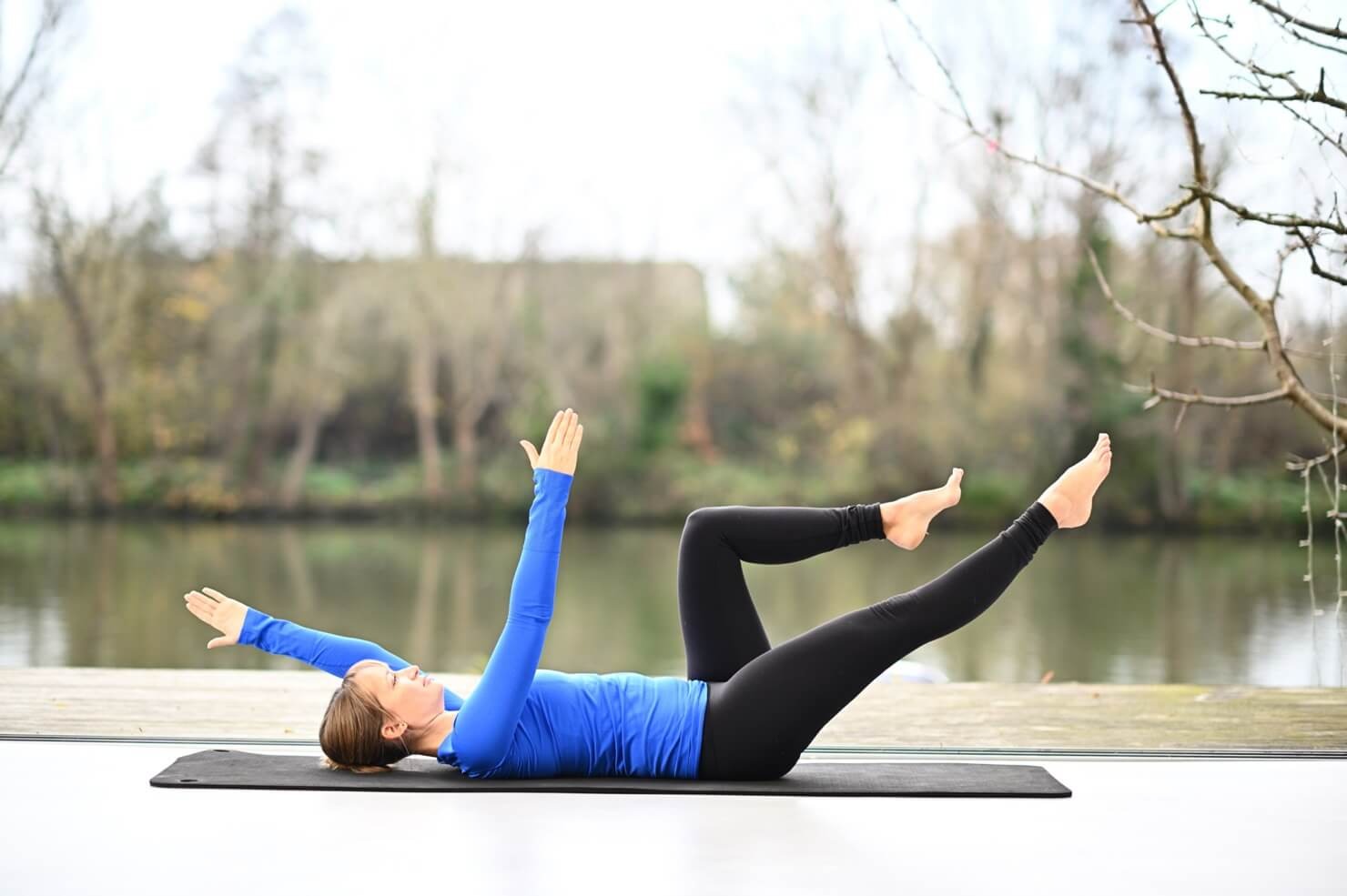

Featured
How Often Should You Workout Your Legs
Modified: January 2, 2024
Discover the recommended frequency for leg workouts with our featured article: How Often Should You Workout Your Legs. Achieve optimal results and avoid overtraining.
Introduction
Leg workouts are an essential part of any comprehensive fitness routine. Strong and well-developed legs not only enhance physical performance, but they also contribute to overall balance and stability. Whether you’re an athlete, a regular gym-goer, or simply someone looking to improve their fitness level, incorporating regular leg workouts into your exercise regimen is crucial.
Leg exercises target large muscle groups such as the quadriceps, hamstrings, calves, and glutes. These muscles play a vital role in various movements, including walking, running, jumping, and lifting. Strengthening these muscle groups provides a foundation for overall strength and power in the body.
While it is important to work out your legs regularly, it’s equally important to find the right balance. Overtraining can lead to muscle fatigue, injury, and hinder your progress. On the other hand, neglecting leg workouts can result in muscle imbalances and limit your overall physical performance.
In this article, we will explore the importance of leg workouts, factors to consider when determining the frequency of leg workouts, recommended guidelines for leg workout frequency, and the benefits of regular leg workouts. We will also discuss the risks of overtraining and provide tips on preventing overtraining and promoting proper recovery.
Importance of Leg Workouts
Leg workouts play a crucial role in building overall strength, improving athletic performance, and promoting functional movement patterns. Here are some key reasons why leg workouts are important:
- Strength and Power: Leg exercises such as squats, lunges, and deadlifts engage multiple muscle groups simultaneously, including the quadriceps, hamstrings, and glutes. These exercises help to develop strength and power in the lower body, which is essential for activities like running, jumping, and lifting heavy objects.
- Balance and Stability: Strong leg muscles provide a stable foundation for balance and stability, both in everyday life and during physical activities. Working on the muscles in your legs can help prevent falls and injuries, particularly for older adults.
- Metabolism Boost: Leg workouts involve large muscle groups, which require more energy during exercise. This can lead to a higher calorie burn compared to workouts that target smaller muscle groups. Regular leg workouts contribute to an increased metabolic rate, making it easier to maintain a healthy body weight.
- Functional Movement: Leg exercises mimic movements that we perform in our daily lives. From climbing stairs to picking up objects from the ground, strong leg muscles enhance functional movement patterns, making these tasks easier and reducing the risk of injury.
- Overall Muscle Development: Your legs are a major muscle group in your body, and neglecting them can result in muscle imbalances. By incorporating leg workouts into your routine, you ensure balanced muscle development and prevent any weaknesses that may hinder overall strength and performance.
By understanding the importance of leg workouts, you can prioritize their inclusion in your fitness regimen and reap the numerous benefits they provide.
Factors to Consider
When determining the frequency of your leg workouts, there are several factors that you should take into consideration:
- Training Experience: Your training experience plays a role in how often you should work out your legs. Beginners may require more rest and recovery time compared to more experienced individuals. If you’re just starting out, it’s recommended to start with 1-2 leg workouts per week and gradually increase the frequency as your body adapts.
- Overall Fitness Goals: Your overall fitness goals should guide the frequency of your leg workouts. If your focus is on muscle growth and strength, you may need to train your legs more frequently. However, if your goal is to maintain general fitness or improve cardiovascular endurance, fewer leg workouts may be necessary.
- Recovery ability: Everyone’s recovery ability is different. Some individuals may recover quickly and require less downtime between leg workouts, while others may need more rest days for proper recovery. Pay attention to your body and listen to signs of fatigue or overtraining. Adjust the frequency of your leg workouts accordingly.
- Other Training Modalities: If you engage in other forms of exercise, such as running, cycling, or weightlifting, it’s important to consider the impact these activities have on your leg muscles. Overloading your legs with too much exercise can increase the risk of injury and hinder your progress. Ensure that you have enough rest days and incorporate cross-training days to give your leg muscles time to recover.
- Age and Health Status: Age and health status can also affect the frequency of leg workouts. Older individuals or those with underlying health conditions may require more recovery time between sessions. It’s important to consult with a healthcare professional or a qualified fitness trainer if you have any concerns or pre-existing conditions.
By considering these factors, you can determine the optimal frequency for your leg workouts and tailor your training program to suit your individual needs.
Frequency Recommendations
The frequency of leg workouts depends on your fitness level, goals, and recovery ability. Here are some general recommendations to help guide you:
- Beginners: If you’re new to leg training or have limited fitness experience, starting with 1-2 leg workouts per week is a good starting point. This allows your muscles to adapt to the new demands and gives you time to recover properly.
- Intermediate: Once you have a solid foundation and your muscles have adapted to the training, you can increase the frequency to 2-3 leg workouts per week. This level of frequency allows for continued progress and promotes muscle growth and strength development.
- Advanced: Advanced individuals who have been consistently training their legs and have a good recovery ability can consider 3-4 leg workouts per week. This level of frequency challenges the muscles and can further enhance strength and muscle development.
- Elite Athletes: Elite athletes or individuals with specific sport-related goals may need to work out their legs even more frequently, depending on their training program and competition schedule. In these cases, it’s crucial to have a well-designed program that includes sufficient rest and recovery days to prevent overtraining and maximize performance.
Remember, these recommendations are general guidelines and can be adjusted based on your individual needs and circumstances. It’s important to listen to your body and pay attention to signs of fatigue or overtraining. If you feel excessively sore, fatigued, or notice a decline in performance, it may be an indication that you need to reduce the frequency or intensity of your leg workouts.
Ultimately, finding the right balance between frequency and recovery is key to achieving optimal results and preventing injuries. Consulting with a qualified fitness professional can provide valuable guidance in designing a leg workout routine tailored to your specific needs and goals.
Benefits of Regular Leg Workouts
Regular leg workouts offer a range of benefits that go beyond just building strong and muscular legs. Here are some key advantages of incorporating leg exercises into your fitness routine:
- Increased Strength and Power: Leg workouts target large muscle groups such as the quadriceps, hamstrings, and glutes. By regularly engaging these muscles, you can significantly increase their strength and power. This, in turn, improves your overall physical performance in activities that require lower body strength, such as running, jumping, and lifting.
- Improved Balance and Stability: Strong leg muscles play a vital role in maintaining balance and stability. Regular leg workouts help stabilize the joints in your lower body, reducing the risk of falls and injuries. This benefit is especially important for older adults, as it helps maintain independence and mobility.
- Enhanced Metabolic Rate: Leg exercises engage multiple muscle groups simultaneously, which increases the demand for energy during workouts. This leads to a higher caloric expenditure and an elevated metabolic rate even after the workout is over. Regular leg workouts can contribute to an overall increase in metabolism and support healthy weight management.
- Improved Functional Movement: Leg exercises mimic real-life movements and improve functional fitness. Strengthening your legs through exercises like squats and lunges can improve your ability to perform everyday tasks like climbing stairs, lifting heavy objects, and maintaining proper posture.
- Prevention of Muscle Imbalances: Neglecting leg workouts can lead to muscle imbalances, where certain muscle groups become stronger while others remain underdeveloped. Regular leg workouts help to maintain balanced muscle development throughout your body, minimizing the risk of injuries and improving overall muscle symmetry and aesthetics.
Incorporating leg workouts into your regular fitness routine can improve your physical capabilities, enhance your overall strength and endurance, and support a healthier and more functional body.
Overtraining and Recovery
While regular leg workouts are beneficial, it’s important to be mindful of the risks of overtraining and the need for proper recovery. Overtraining occurs when you push your body beyond its limits without giving it adequate time to rest and recover. This can lead to physical fatigue, decreased performance, and an increased risk of injuries. Here’s what you need to know about overtraining and recovery:
- Signs of Overtraining: Pay attention to the following signs that may indicate you’re overtraining:
- Chronic muscle soreness and fatigue
- Inability to complete workouts as usual
- Decreased strength and performance
- Increased susceptibility to illness or injury
- Persistent feelings of fatigue and lack of motivation
If you experience these symptoms, it’s important to listen to your body and adjust your training accordingly.
- Recovery Importance: Recovery is crucial for muscle repair, growth, and overall performance. It allows your body to adapt to the stress of training, replenish energy stores, and prevent overuse injuries. Proper recovery involves adequate rest, quality sleep, proper nutrition, and stress management techniques.
- Rest Days: Incorporate rest days into your training schedule to allow your leg muscles to recover. These are days when you don’t perform intense leg exercises. Instead, focus on active recovery activities like walking, stretching, or foam rolling to promote blood flow and muscle relaxation.
- Sleep: Aim for 7-9 hours of quality sleep each night. During sleep, your body repairs and rebuilds muscles. It’s also the time when growth hormone is released, aiding in muscle recovery and development.
- Nutrition: Proper nutrition is essential for recovery. Ensure you’re consuming enough protein to support muscle repair, along with a balanced diet that includes carbohydrates for energy and micronutrients for overall health. Hydration is also vital for optimal recovery.
- Active Recovery: Incorporating active recovery techniques such as light stretching, foam rolling, and low-impact activities on rest days can enhance blood flow, reduce muscle soreness, and improve overall mobility.
By prioritizing recovery and avoiding overtraining, you will optimize the benefits of your leg workouts and minimize the risk of injuries, allowing you to progress towards your fitness goals more effectively.
Signs of Overtraining
Overtraining can have detrimental effects on your physical and mental well-being. It’s important to recognize the signs of overtraining so that you can make the necessary adjustments to your training routine. Here are some common signs to watch out for:
- Chronic Muscle Soreness and Fatigue: While some muscle soreness is expected after a tough workout, excessive and prolonged muscle soreness can be a sign of overtraining. This soreness may linger for days and make it difficult to perform everyday activities.
- Inability to Complete Workouts as Usual: If you find yourself struggling to complete your usual workouts, unable to lift the same weights or complete the same number of reps as before, it may indicate that your body is not recovering adequately and is being pushed beyond its limits.
- Decreased Strength and Performance: Overtraining can lead to a decline in strength and performance, even though you may be putting in the same or more effort during your workouts. If you find that you’re consistently regressing instead of progressing, it’s a sign that you may need to take a step back and prioritize recovery.
- Increased Susceptibility to Illness or Injury: Overtraining puts a strain on your immune system, making you more susceptible to frequent illnesses like colds, flu, or other infections. Additionally, overworked muscles and joints are more prone to injuries such as strains, sprains, and stress fractures.
- Persistent Feelings of Fatigue and Lack of Motivation: Overtraining can lead to persistent feelings of fatigue, both physical and mental. You may constantly feel tired, lack motivation to exercise, or experience a decreased interest in activities you once enjoyed.
It’s important to remember that these signs may vary from person to person and can be influenced by various factors such as training intensity, recovery practices, and individual differences. If you notice these signs or suspect that you might be overtraining, listen to your body and make the necessary adjustments to your training routine. This may include incorporating more rest days, reducing training volume or intensity, and prioritizing recovery strategies such as proper nutrition, sleep, and stress management.
How to Prevent Overtraining
Preventing overtraining is essential for maintaining optimal physical performance and avoiding the negative effects of excessive training. Here are some strategies to help prevent overtraining:
- Build Your Training Program Gradually: Start with a realistic and manageable training load, gradually increasing intensity, duration, and frequency over time. This allows your body to adapt and build strength without overwhelming it from the start.
- Listen to Your Body: Pay attention to the signals your body sends. If you’re feeling excessively fatigued, experiencing persistent muscle soreness, or noticing a decline in performance, take it as a sign that you may need more rest and recovery.
- Include Rest Days: Incorporate regular rest days into your training schedule. Rest days allow your muscles to recover and repair, helping to prevent overuse injuries and maintain optimal performance.
- Proper Nutrition: Fuel your body with a well-balanced diet to support your training. Adequate protein intake is crucial for muscle repair and recovery. Include a variety of nutrient-dense foods to ensure you’re getting all the essential vitamins and minerals necessary for optimal performance.
- Quality Sleep: Prioritize quality sleep as it plays a vital role in muscle recovery and overall performance. Aim for 7-9 hours of uninterrupted sleep each night to allow your body to repair and rejuvenate.
- Periodize Your Training: Implement periodization in your training program, which involves varying the intensity and volume of your workouts over time. This allows for planned periods of increased and decreased training load to prevent overtraining and promote progress.
- Listen to Professionals: Seek guidance from qualified fitness professionals, coaches, or trainers who can help design a training program tailored to your needs and goals. They can provide valuable insights and expertise to prevent overtraining and optimize your results.
- Manage Stress: High levels of stress can contribute to overtraining. Incorporate stress management techniques such as meditation, deep breathing exercises, or engaging in hobbies and activities you enjoy to help reduce overall stress levels.
Remember, it’s important to find the right balance between training and recovery. By implementing these strategies, you can prevent overtraining and ensure that your body has enough time to adapt, recover, and perform at its best.
Conclusion
Incorporating regular leg workouts into your fitness routine is key to building strength, improving performance, and promoting overall physical well-being. By targeting the large muscle groups in your legs, you can develop power, enhance balance and stability, and improve functional movement patterns. However, it’s crucial to find the right balance when it comes to the frequency of your leg workouts to prevent overtraining and promote proper recovery.
Factors such as training experience, overall fitness goals, and recovery ability should be taken into consideration when determining how often to work out your legs. Beginners may start with 1-2 leg workouts per week and gradually increase the frequency as they progress. Intermediate and advanced individuals may benefit from 2-4 leg workouts per week, depending on their goals and recovery capacity. Elite athletes may require even more frequent leg training to meet the demands of their specific sports.
Regular leg workouts offer numerous benefits, such as increased strength and power, improved balance and stability, an elevated metabolic rate, enhanced functional movement, and prevention of muscle imbalances. However, it’s essential to prevent overtraining by paying attention to signs of fatigue, incorporating rest days, optimizing nutrition and sleep, and implementing stress management techniques.
By finding the optimal balance between leg workout frequency and recovery, you can maximize the benefits of your training, minimize the risk of injury, and achieve your fitness goals effectively. Remember to listen to your body, consult with professionals when needed, and prioritize self-care to ensure long-term success and sustainable progress in your leg workouts and overall fitness journey.









